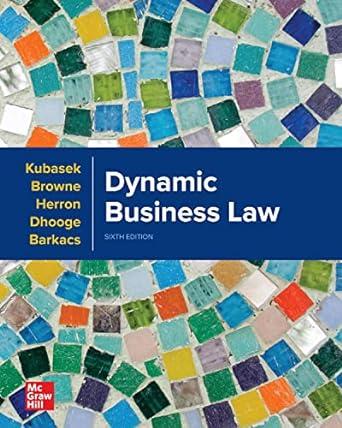Question
Current debates about legalization of marijuana highlight some of the tensions between state and federal power and authority. After reading the three cases below, how
Current debates about legalization of marijuana highlight some of the tensions between state and federal power and authority. After reading the three cases below, how do you make sense of the line between powers/authority properly exercised by the Federal government and that exercised by the States? In other words, how are the Courts' decisions in these three cases similar and/or different with respect to their reasoning? As part of your answer, please indicate which clauses, articles, amendments of the US Constitution come into play. You might also address the following questions:
- What modes of interpretation is the Court using in the three decisions?
- What function of the Constitution does each case represent (as per the Preamble)?
- Who are "we the people" according to the Supreme Court?
- Reflect on what it means for states and/or the federal government to have the authority/power over various areas of law/issues. What kind of impact on the political life of the nation does it have if the states have unfettered power over issues within their boundaries? If the federal government has that power?
Cases:
- McCulloch v. Maryland4 Wheat. 316 (1819)
- Barron v. Baltimore7 Pet. 243 (1833)
- Gonzales v. Raich545 US 1 (2005)
Step by Step Solution
There are 3 Steps involved in it
Step: 1
In McCulloch v Maryland the Court established the supremacy of federal law over state law through the Necessary and Proper Clause and the Supremacy Cl...
Get Instant Access to Expert-Tailored Solutions
See step-by-step solutions with expert insights and AI powered tools for academic success
Step: 2

Step: 3

Ace Your Homework with AI
Get the answers you need in no time with our AI-driven, step-by-step assistance
Get Started


